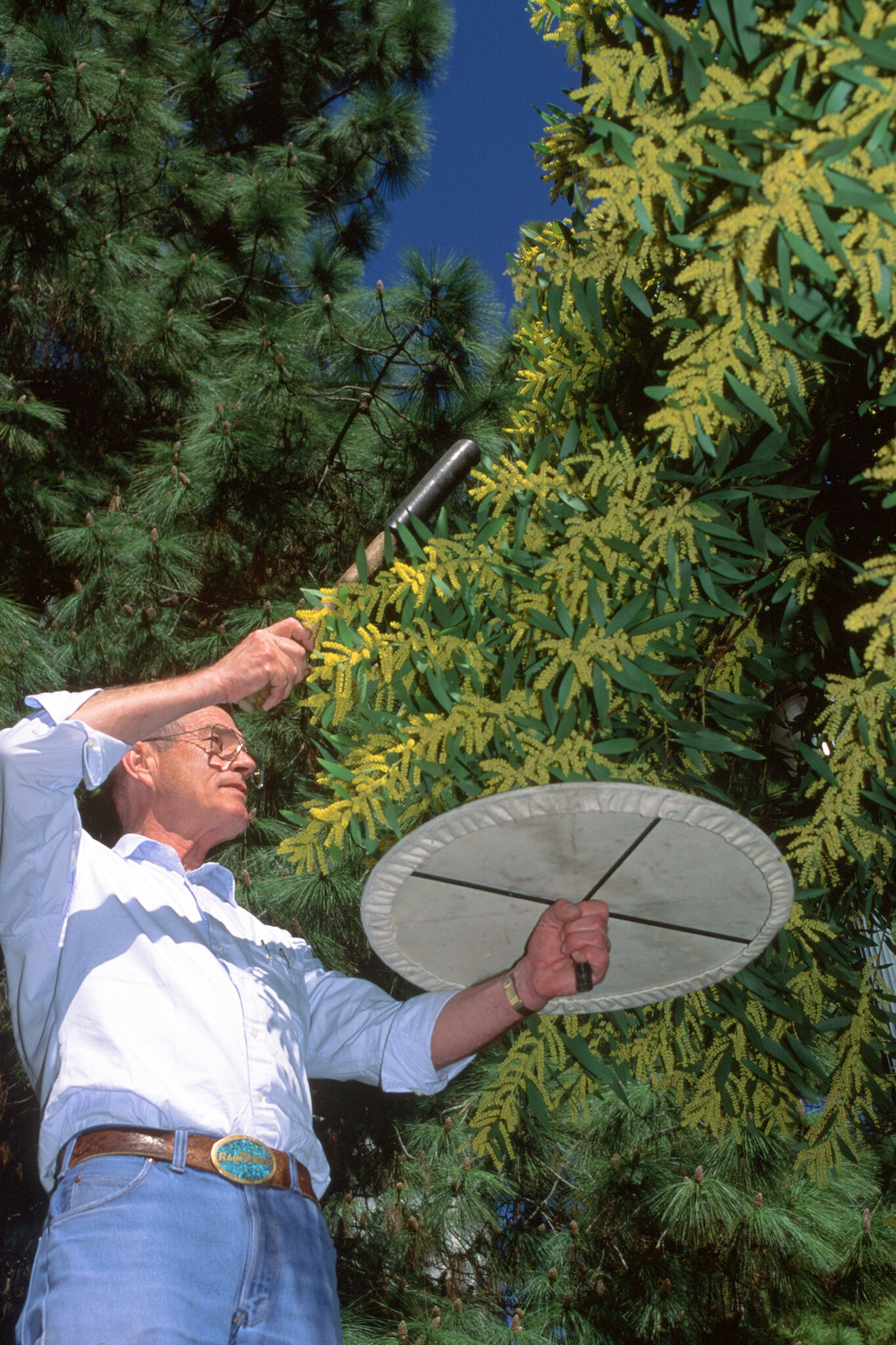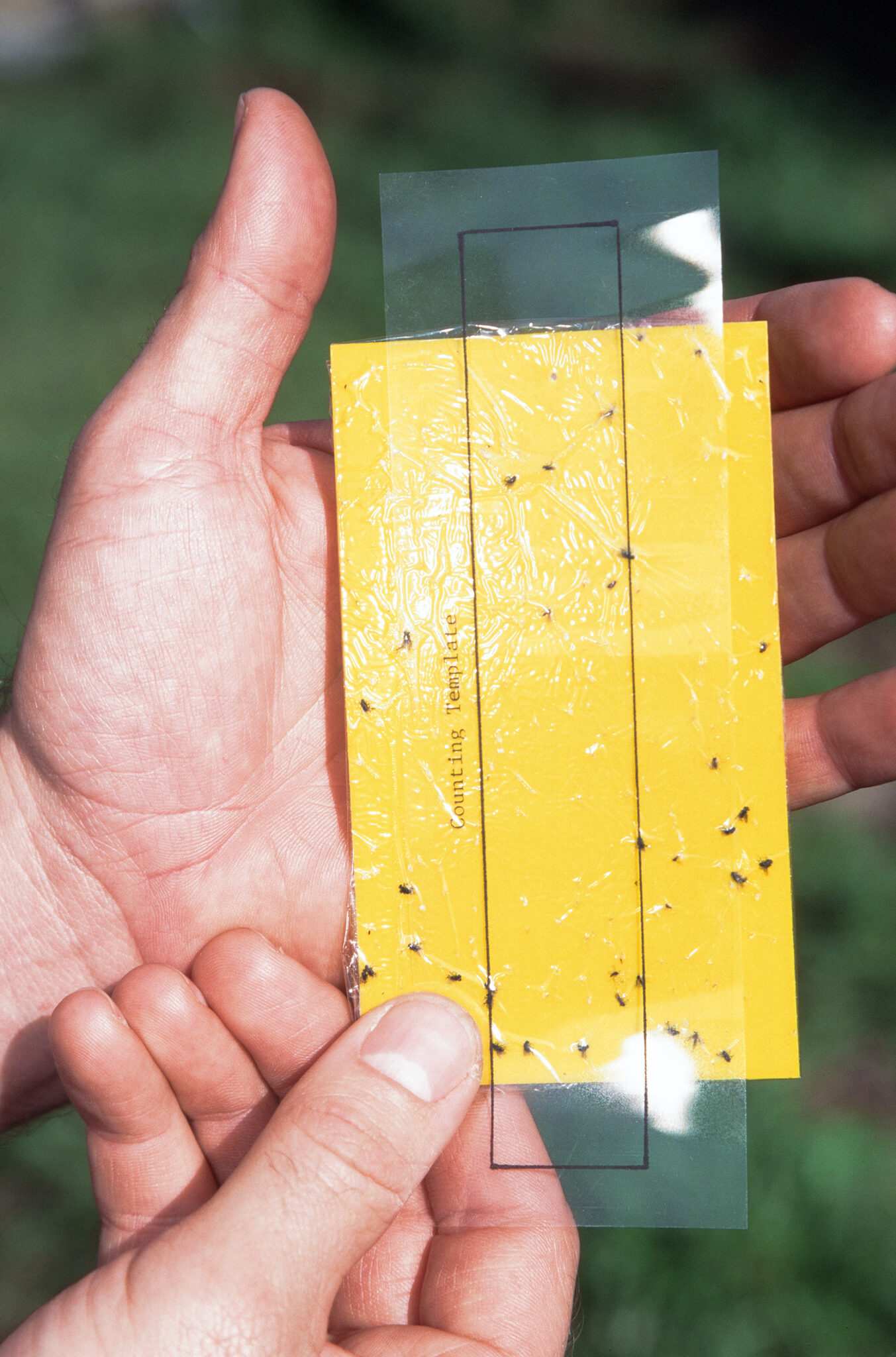
When we kill off the natural enemies of a pest, we inherit their work.”
This quote, from Dr. Carl Huffaker of UC Berkeley in a 1976 New York Times article, is echoed by UCCE farm advisors and others who work in pest management.
Preserving natural enemies, or beneficial insects in an orchard, can help reduce crop damage, save growers on pesticide application costs and is an integral part of an integrated pest management program, said Jhalendra Rijal, UCCE area IPM advisor for the northern San Joaquin Valley.
“If beneficials are reliable, activity can be monitored and treatments can be based on their activity in an orchard,” Rijal said.
“As high value nuts of global reach, pistachio, almond and walnut markets are asking about the sustainable production practices, which growers have been implementing for decades in some form of an IPM program that includes preserving and utilizing the beneficials,” he said.
Striking a balance between economically damaging levels of the target insect pest and the beneficial insect population is the goal of biological control.
Know Your Enemies
Deciding on pest management in an orchard depends on the pest. Not all insect pests in nut orchards have a natural enemy present in enough abundance to reliably provide sufficient biological control. Pests that tend to have native and reliable predators or parasites include mites, scales, mealybugs and aphids. Other pest species, including navel orangeworm (NOW) and plant bugs have less reliable biological controls. The Sustainable Agriculture Research and Education program has information on parasitoid species Goniozus legneri, Copidosomopsis plethorica and a Habrobracon species that can reduce damage from NOW. Goniozus legneri is commercially available for release and serves as an alternative control in organically managed orchards. Small bugs in the genus Phytocoris (P. relativus and P. californicus) feed on NOW eggs. These bugs can be very abundant in pistachio clusters in the spring.
In the case of mites, Rijal said research has shown that sixspotted thrips are a reliable control throughout the growing season. However, use of prophylactic spray of abamectin for mites, and use of broad-spectrum insecticides such as pyrethroids for NOW or plant bugs in the spring and early summer are disruptive for sixspotted thrips in the orchard.
Yellow sticky cards placed in orchard trees can provide a good idea of sixspotted thrips and another predatory of mites, Stethorus beetle numbers, while mite numbers are best monitored by taking leaf samples. A certain level of mite infestation has to be tolerated until the thrips population builds. Check the yellow sticky traps for thrips to get reliable evidence of their presence, Rijal said.
Leaf sampling for mites begins in April, and that is also a good time to place the yellow sticky traps in the trees. Both should be monitored throughout the season to be sure populations are balanced.
Scale insects can be found in all tree nuts along with parasitic wasp species that can keep scale under control. Dormant spur samples of scale can be inspected for signs of wasp activity. During the growing season, Rijal said, the scale males can fly. The activity of San Jose scale can be monitored with a white sticky trap with a lure. The lure attracts both scale and its parasitoid wasp.
More information on dormant season sampling and treatment guidelines can be found at ipm.ucanr.edu/agriculture/almond/Dormant-Spur-or-First-Year-Twig-Sampling-and-Treatment-Guidelines. The link for walnuts is ipm.ucanr.edu/agriculture/walnut/Walnut-Scale/.
The introduced parasitic wasp, Trioxys pallidus, has reduced the need for insecticide applications for walnut aphid. When the parasite is disrupted by applications of broad-spectrum pesticides that are used to control other pests found in walnut orchards, walnut aphid sprays may be required. The use of oil during the growing season has also been shown to be destructive to Trioxys.

Free Service
“Don’t kill them. Don’t’ starve them” is the general rule on beneficial insects in an orchard, said entomologist Emily Symmes, Senior Manager of Technical Field Services for Suterra.
Natural enemies for many nut crop pests exist; if we protect them, they provide a free service. They save on inputs, not just the cost of pesticides, but the time and labor required to apply pest control products, Symmes added.
“It’s great when you find predators and parasitoids for insect and mite pests in your orchard, they can do a good job to help protect the crop,” Symmes said.
Scouting for the presence of natural enemies in an orchard is a critical part of maintaining a balance. While some orchard tasks are now automated, Symmes said having boots on the ground to monitor for insect and mite pests and their natural enemies and knowing what to look for is important.
Knowledge of pest and natural enemy life cycles and biology is helpful in knowing when and where and how often to sample.
Sampling for resident beneficials can be done in a number of ways. Sticky cards, beat sheets, sweep nets or just plain visual observance are all used to determine what beneficials are in an orchard, at what levels and how effective they are at keeping pests under control.
Symmes said growers need to use every method available to manage pests and that use of beneficial organisms is easy and non-detrimental to the environment. Cultural methods, including orchard sanitation and planting cover or trap crops, can impact the balance between pests and natural enemies. Pesticide selection and use timing, she said, should be done in a way to have the least harmful impact on natural enemies.
CCA and PCA Justin Nay with Integral Ag said every effort is made to preserve beneficial populations in an orchard. Their presence is monitored visually for the most part, he said. Looking at leaves, noting numbers and performance gives him a good idea about the balance in the orchard. Nay said when he monitors for San Jose scale or European fruit leucanium, the abundance of parasitism is noted along with parasitoid emergence holes to determine if the beneficial population is active. With that information, decisions can be made in choosing materials for pest control. Choose chemistries that preserve the parasitoid populations, rather than broad-spectrum materials.
Rijal said California tree nut growers are becoming more open to learning about the potential benefits of cover crops, not only for soil and orchard health, but also their contributions to pest management.
More research-based information on cover crops and beneficial insects is expected to be available in the next few years as scientists and advisors verify benefits.










